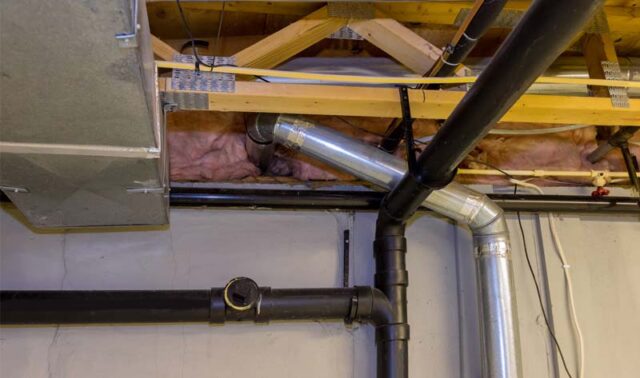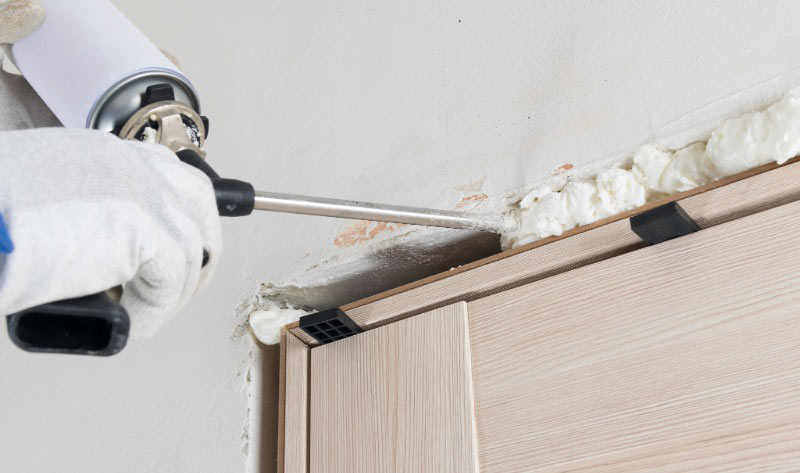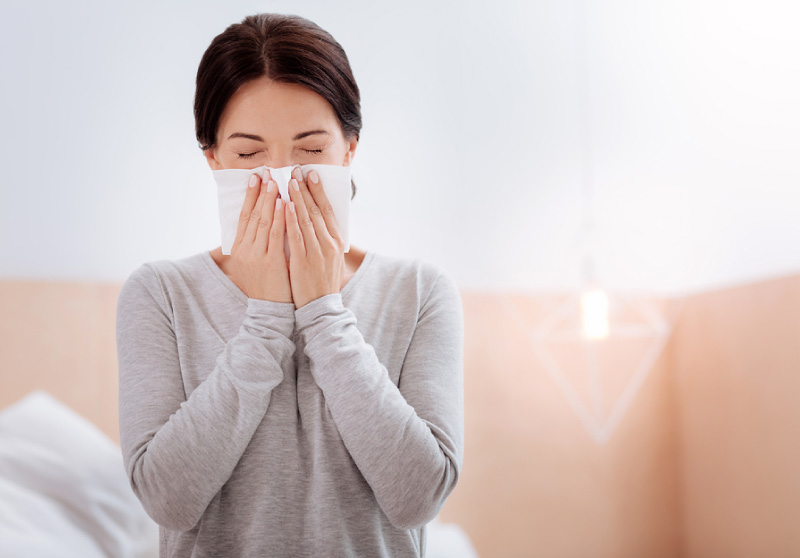Seasonal allergies in Missouri and Kansas are no laughing matter. Each season brings its own agonies, triggered by the tree and grass pollen. If you suffer from allergies, you’re all too familiar with the sneezing, itchy eyes, and congestion that come with them. But here’s something many homeowners don’t realize: Keeping that outdoor air, and everything it carries, out of your home can help reduce allergy symptoms and make your home feel a whole lot better.
Missouri and Kansas Allergy Season and Your Indoor Air
Allergy triggers change with the seasons:
- Spring: Trees and grasses unleash a wave of pollen.
- Summer: Weed pollens take over.
- Fall: Outdoor mold spores peak just as the leaves start to drop.

Even when you’re inside, you’re not completely safe. Most of us spend 90% of our time indoors yet many of us don’t realize how much outside air (and pollen, mold, and pollutants) can enter your home through gaps and penetration points.
Health experts recommend keeping your windows and doors shut on high-pollen days, but that only works if your house isn’t already leaking air.
The Air Sealing Solution
Here’s where air sealing your home comes in. Sealing air leaks is one of the most effective ways to reduce allergen exposure and create a healthier indoor environment. It also cuts your energy bills, reduces drafts, and helps your HVAC system run more efficiently.
How Outside Air Leaks into Your Home
Common leak spots include:
- Attic penetrations
- Plumbing and ductwork gaps
- Chimney chases
- Recessed lighting fixtures
- Window and door frames
- Gaps where building materials meet

Then there is stack effect. In winter, heated indoor air rises and escapes through cracks up high through your ceiling and roof. This sucks cold outside air in through lower leaks around places like your foundation, doors, and windows. In summer, your cooled air escapes and is replaced by hot, humid air. Your house ends up acting “like a giant chimney.”
Air Sealing: A Solution for Allergy Relief
Proper air sealing is a key part of a typical Missouri or Kansas weatherization plan, specifically to reduce infiltration. It blocks outdoor pollutants, including pollen, dust, and mold spores, before they can get inside and trigger allergy symptoms. Air sealing works as a type of armor for your building envelope to help create an allergen-safe indoor environment.
It’s important to reduce as much air leakage as possible but be sure you have controlled ventilation to go with it. Instead of relying on leaky windows or walls that allow unfiltered ventilation, you can “seal tight and ventilate right.” This lets you ventilate on your terms and filter fresh air in when pollen counts are low.
How to Seal Up the Leaks
Here are some methods for sealing up air leaks around your home. While some areas may be small DIY projects, it’s best to call in a professional for the bigger jobs.
Caulking and weatherstripping are two effective air sealing techniques you can use on small areas of your home. Caulking is used to fill stationary cracks, like those around your foundation or wire/plumbing penetrations. While weatherstripping is applied to moving parts, such as your windows and doors.
It’s important to take care of these specific areas:
- Caulk and seal gaps where plumbing, ductwork, or electrical wiring penetrates your walls, floors, and ceilings.
- Use spray foam insulation installed by a qualified contractor to seal and insulate larger gaps.
- Add foam gaskets behind outlet covers.
- Install door sweeps to seal exterior doors

Finding air leaks can be tricky. A professional home energy audit often includes a blower door test that uses a large fan to depressurize your home and pinpoint hidden leaks.
Many Kansas City homes built in recent years must meet air leakage limits verified by blower door testing. But if your home is older, it likely wasn’t built up to modern air sealing and insulation standards. That makes it even more important to seal up your home’s air leaks.
More Benefits of a Sealed Home
Improved Comfort
A sealed home means fewer drafts and cold spots. You and your family can enjoy more stable, comfortable temperatures and fewer issues with moisture, pests, and air pollutants. You’ll feel the difference right away.
Lower Energy Bills
Air sealing and insulation are cost-effective measures that help cut your heating and cooling costs. Together, they keep heated air in during the winter and hot air out during the summer. When your furnace and AC don’t have to work as hard, it means big savings on your energy bills, and less wear and tear on your HVAC system.
A Quieter Home
Gaps let in both noise and air. Sealing them adds a soundproof layer that lessens outside air flow and outside noise. You’ll enjoy a quieter, more peaceful home.
Better Long-Term Durability

Sealing air leaks helps keep moisture out of your attic spaces and walls. This reduces the risk of mold growth or wood rot and helps preserve your home’s structure. It also helps protect your insulation from dust buildup which is a sign of air leaks.
Breathe Easier with a Sealed, Healthy Home
Whether you’re battling seasonal allergies, trying to improve energy efficiency, or just want a quieter, more comfortable space, air sealing your home is one of the smartest upgrades you can make. It reduces allergens like dust mite particles and mold spores, helps with improving indoor air quality, and puts you in control of your indoor air.
Ready to Seal the Leaks? Call Hayes.
The Hayes Company has been Kansas City’s trusted insulation experts since 1978. We offer energy audits, spray foam insulation, and a full range of air sealing services tailored to your home.
Contact us today for a free home assessment. Our energy team is ready to transform your Missouri or Kansas home into a more comfortable, allergy-friendly space for you and your family.
References
Missouri Department of Health and Senior Services, Environmental Public Health Tracking Program. (n.d.). Pollen and mold. Missouri Environmental Public Health Tracking Data Portal. https://ephtn.dhss.mo.gov/EPHTN_Data_Portal/pollen-and-mold.php#
Missouri Department of Health and Senior Services. (n.d.). Indoor air quality. Missouri Department of Health and Senior Services. https://health.mo.gov/living/environment/indoorair/index.php#:~:text=Healthy%20indoor%20environments%20have%20become,pollutant%20exposure%20levels%2C%20while%20improper
U.S. Department of Energy. (n.d.). Air sealing your home. Energy.gov. https://www.energy.gov/energysaver/air-sealing-your-home
University of Missouri Extension. (n.d.). E3A: energy management for home. MU Extension Publications. https://extension.missouri.edu/media/wysiwyg/Extensiondata/Pub/pdf/energymgmt/em0101.pdf
Missouri Department of Natural Resources. (n.d.). Weatherization. Missouri Department of Natural Resources. https://dnr.mo.gov/energy/weatherization#
Insulation Institute. (2025, May). Missouri energy code requirements: Kansas City adoption. N158-MO Energy Code. https://insulationinstitute.org/wp-content/uploads/2025/05/N158-MO-Energy-Code-0425.pdf#:~:text=%E2%80%A2%20Kansas%20City%20has%20adopted,2018%2F2021%20IECC%20CODE%20SECTION%20JURISDICTION


